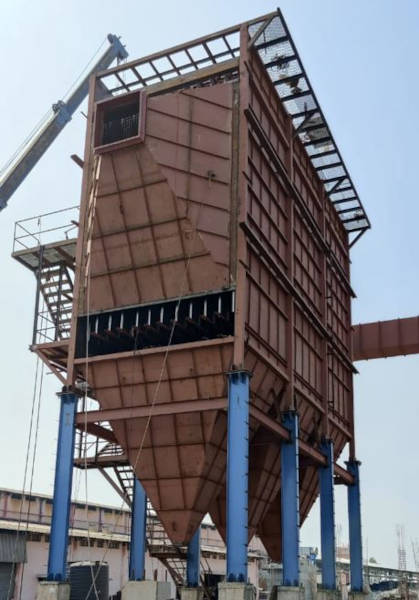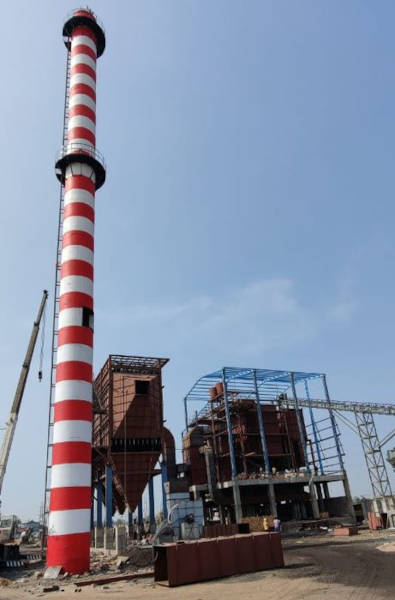Electrostatic Precipitator
The ALEP electrostatic precipitator can be used to separate micro-fine dust particles form hot processes gases of 350-400 Degree Celsius. Therefore, ESP is used in boiler plants and various chemical process industries.
ESP Principle of Operation
- The dust-contaminated process gas enters the electrostatic precipitator horizontally and is distributed uniformly across the entire filter cross-section through the perfect gas distribution system.
- The electrical field is generated between the corona discharge electrodes and the collecting electrode plates by applying high voltage. The process gas and dust particles are electrically charged.
- The charged particles are transported to the collecting electrodes plates by electric field strength, where they agglomerate with the existing dust particles. The collected dust particles are removed from the collecting surface by a mechanical rapping hammer system.
- The removed dust particles dropped into the hopper below and are removed through the dust collection system.
- The purified gas leaves ESP.


ESP Technology
- Gas distribution screens are provided at the inlet and outlet as per computer modeling for proper gas distribution in ESP.
- Horizontal passage of the ESP consist of the suspended collecting electrodes in plate construction with dust collecting channels. These help to maintain a uniform electric field and smooth removal of collected dust particles without re-entrainment of dust.
- High-performance discharge electrodes are made of special stainless steel strips and are arranged in the center. A suitable clearance is given between mounting of the framing and discharge electrode.
- A simplified mechanical rapping hammer mechanism is used to knocked of dust particles from corona discharge electrodes and collecting plates electrodes.
- Transformer-Rectifier sets supply specified DC Voltage and current to the field of Electrostatic Precipitator.
- Low Power Consumption of the electric system.
- Electric heating of the insulator and hooper (in special cases) are provided.
- A pyramidal hopper and dust conveying system are provided to prevent the accumulation of dust.
- High performance of separation ensured by the current-high voltage control system.
ESP Advantages
- Separation of micro-fine dust particles to meet the required Emission Norms.
- Low-pressure drop.
- Low energy cost compared to fabric filter dust collector.
- Low maintenance and required only one maintenance per year due to few and slowly rotating components in a system.
- Special stainless steel electrodes.
- Continuous dust collection process.
- High gas temperature up to 350-40 degrees Celsius.
- Design for low to a very high volume of gas.
